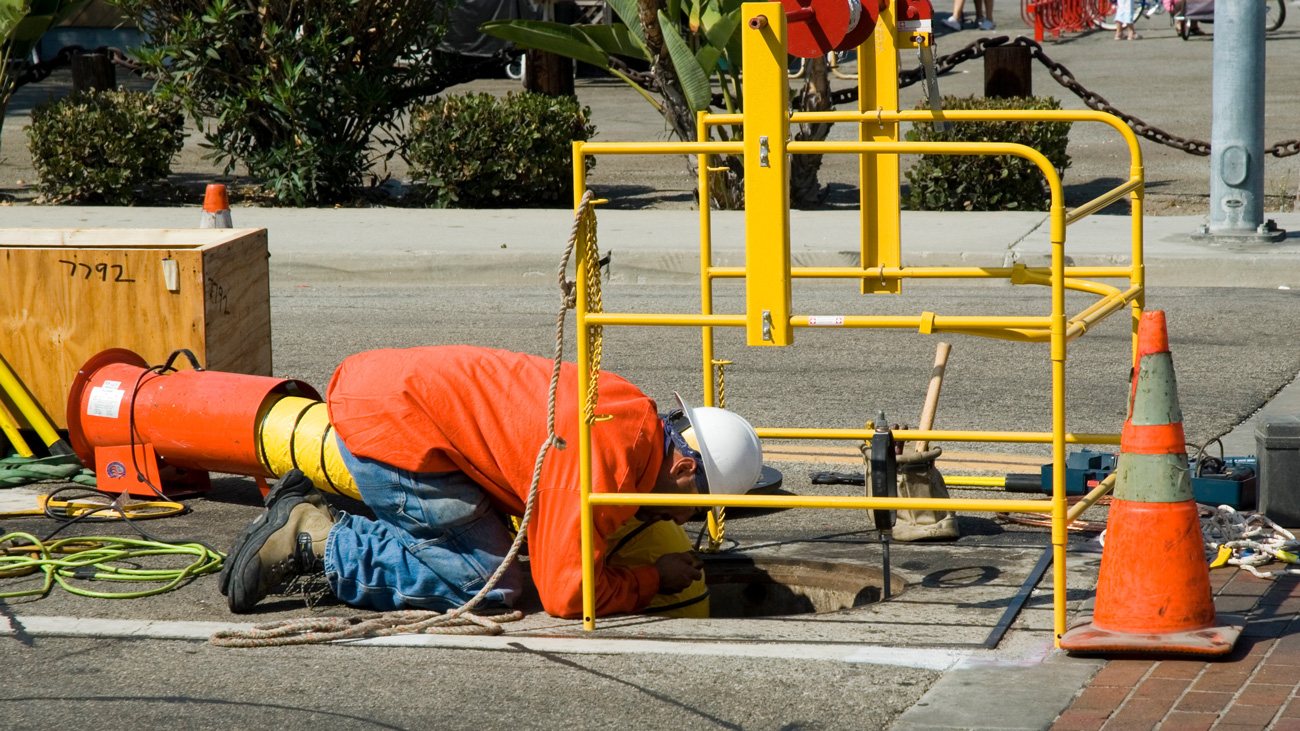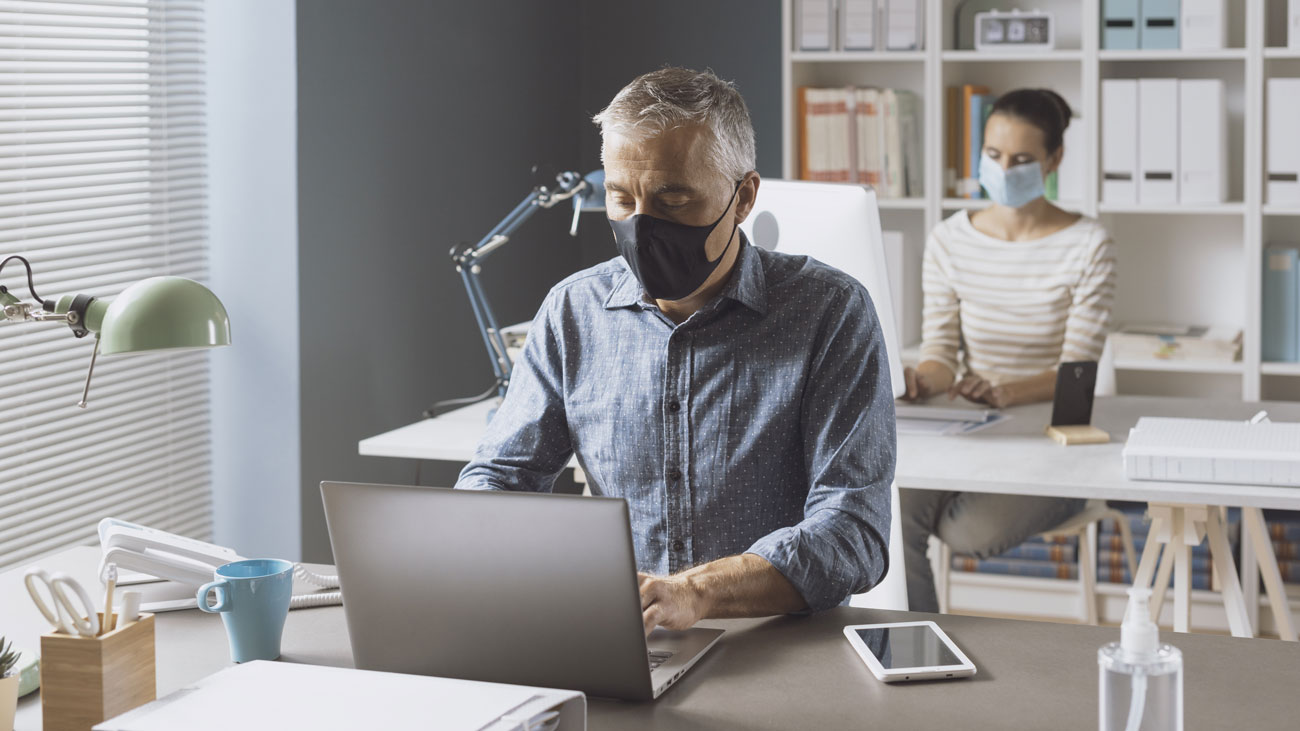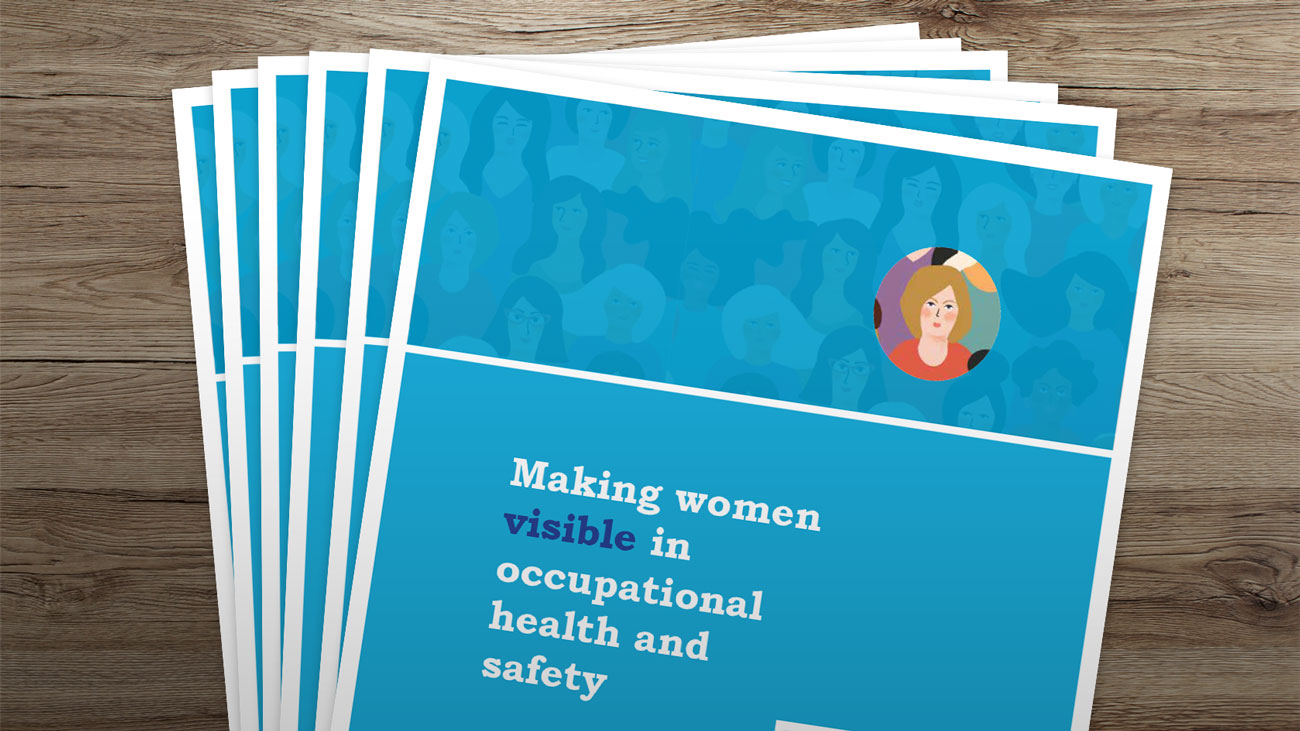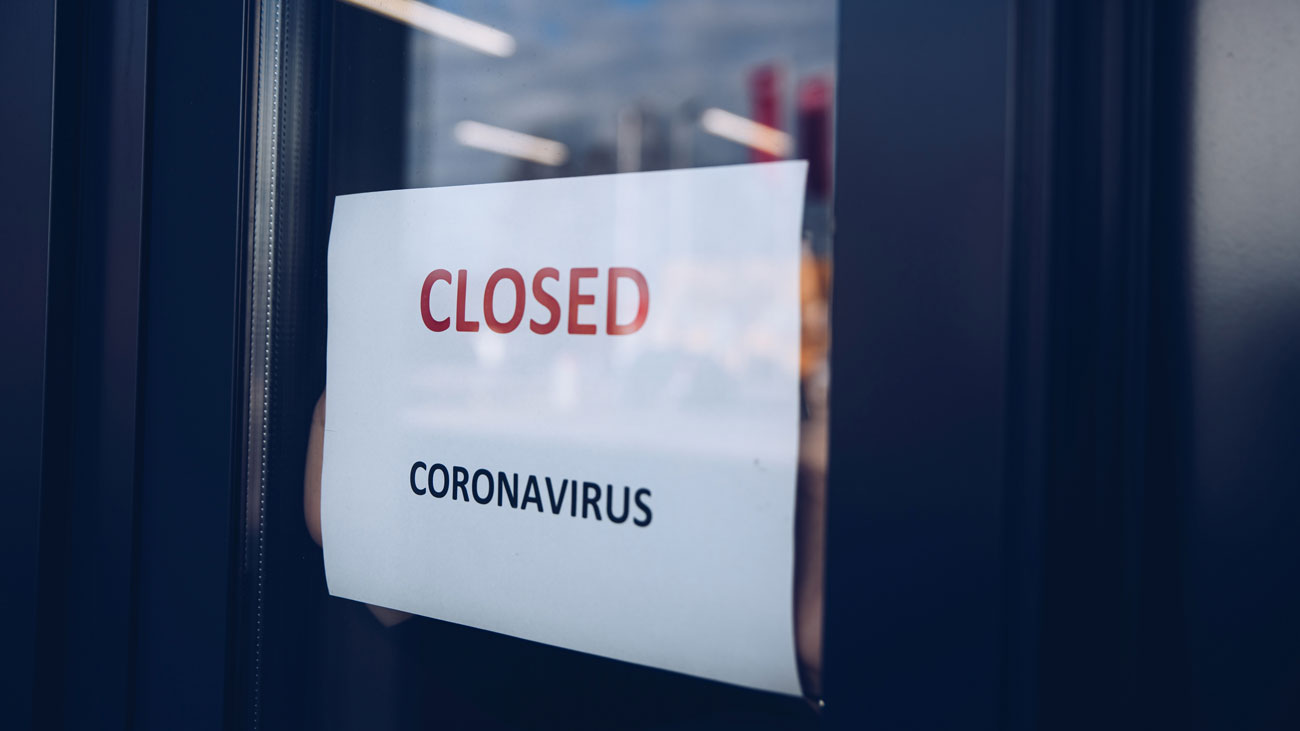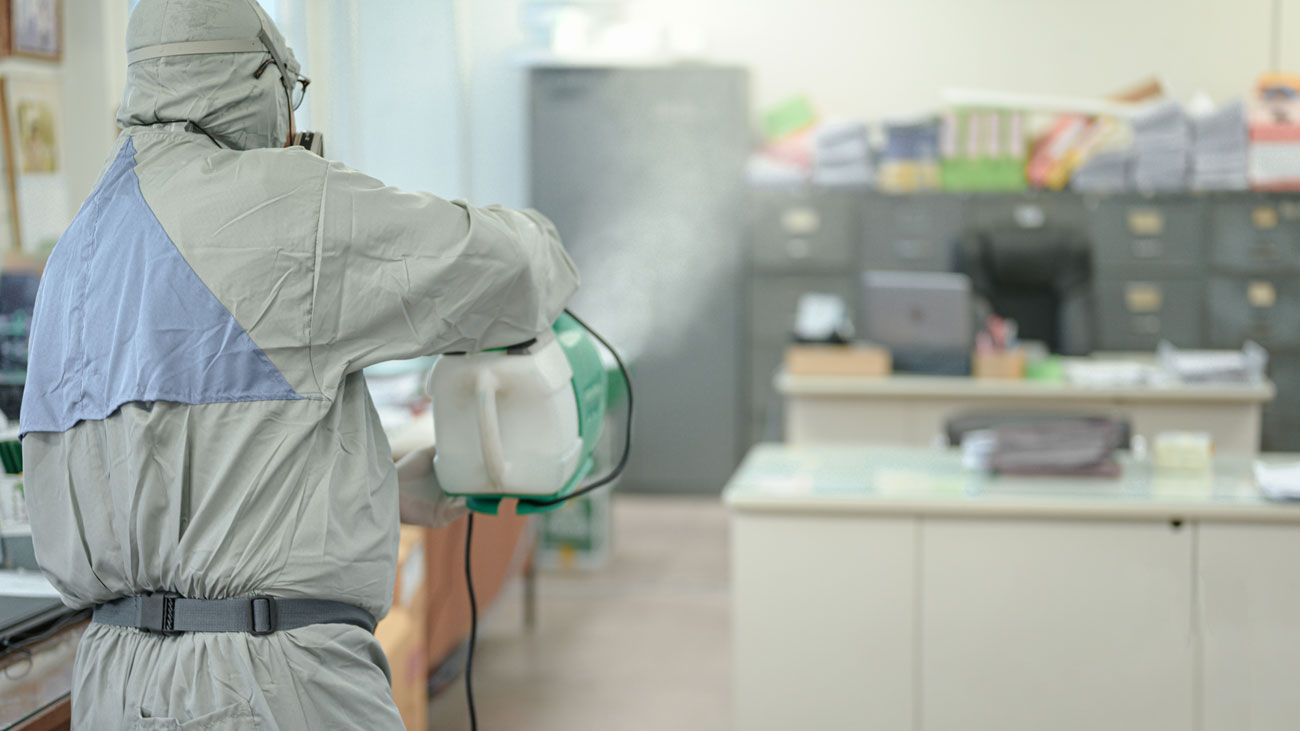
Briefing: Reducing the risk of COVID-19 transmission in workplaces
As of 24 February, the UK Government has ended any remaining legal Coronavirus restrictions in England. However, COVID-19 will be a feature of our lives for the foreseeable future. In this briefing we address how businesses can to learn to live with it and manage the risk to employees.
Employers must plan and implement workplace safety in a way that cares for their people and safeguards their health and wellbeing.
Peter Cheese, Chief Executive of the CIPD, said:
“When deciding what rules and guidance to put in place, employers need to be led by the principles of what is fair and reasonable to ask, respecting that many people with vulnerabilities will still be very concerned about coming into places of work. Reviewing or continuing existing practices to keep workplaces reasonably safe, for example with good ventilation, cleaning and sanitation, and meeting their fundamental duty of care to protect the physical and mental health of their employees will all need to continue to be a priority.”
Employers have a duty of care to ensure that the workplace is sufficiently safe to work in, following the latest government guidance. The key aspects that employers should be aware of are:
- Their legal duty to manage risks to those affected by their business, including the need to carry out health and safety risk assessments and taking reasonable steps to mitigate risk to protect everyone including those most vulnerable to COVID-19.
- Priority actions to take to protect staff and customers, including steps and measures such as improved ventilation, reducing contact for workers, reducing risk for customers, visitors and contractors, cleaning the workplace, personal protective equipment (PPE) and face coverings, workforce management and tests and vaccinations.
- Ongoing emphasis on the importance of ventilation. Employers can refer to the advice on air conditioning and ventilation on the HSE website.
Employers should continue to reduce the risk of COVID-19 transmission in line with their risk assessment. The HSE provides the following guidance on workplace controls that remain:
Adequate ventilation
The law says employers must make sure there’s an adequate supply of fresh air (ventilation) in enclosed areas of the workplace. This has not changed during the pandemic. Someone who has Coronavirus breathes out small particles (aerosols) of the virus. Adequate ventilation reduces how much virus is in the air, so it reduces the risk of breathing in the virus. As part of your risk assessment to protect your workers and others from COVID-19, you should identify poorly ventilated work areas.
- Look for areas where there is no natural ventilation (open windows, doors, or vents) or mechanical ventilation (fans or ducts bringing air in from outside).
- If a mechanical ventilation system only recirculates air and has no outdoor air supply, the area is likely to be poorly ventilated.
- Identify areas that feel stuffy or smell bad.
- Consider using a CO2 monitor to identify poor ventilation.
It may help to list areas in your workplace or use floor plans to record how they are ventilated. Remember to include changing rooms and areas used for breaks, such as canteens.
Numbers of people using or occupying an area
The more people who use or occupy an area, the greater the risk of aerosol transmission. The risk increases if an area is poorly ventilated and occupied by more than one person. Consider how many people use or occupy a space at any one time. Is there a set number of people each day?
Larger work areas
The larger the area, the lower the risk. This is because larger spaces:
- Have more air to help dilute the virus;
- Tend to be designed with ventilation rates in mind; and
- Take longer for aerosols to build up in them.
Although ventilation is important it doesn’t reduce:
- Droplet transmission (from people being in close contact); and
- Contact transmission (touching surfaces).
Sufficient cleaning
You may need to increase how often and how thoroughly you normally clean your workplace, as well as cleaning surfaces that you do not normally clean. If you are cleaning because of a known or suspected case of COVID-19 in your workplace you should follow the GOV.UK guidance. You should determine what cleaning regime is suitable for your business based on your risk assessment.
Your risk assessment will help you to identify what your cleaning regime will look like, but you should consider these examples:
- Keep surfaces clear so that cleaning can be carried out more effectively.
- Clean areas regularly in line with your cleaning regime.
- Set clear guidance for the use and cleaning of toilets, showers and changing facilities to make sure they are kept clean.
- Clean work areas and equipment between uses.
- Frequently clean and disinfect objects and surfaces that are touched regularly.
- If equipment like tools or vehicles are shared, then clean them after each use.
Identify frequently touched surfaces
Doors, bannisters, buttons and anything that is frequently touched, especially if it's touched by lots of people, may need more regular cleaning than normal. Examples of frequently touched objects include:
- Work surfaces like desks, platforms and workstations.
- Handles on doors, windows, rails, dispensers and water coolers.
- Common areas like toilets, reception, changing rooms, corridors and lifts.
- Vehicle handles, steering wheels, seat belts and internal surfaces.
- Control panels for machinery, control pads and switches.
- Computer keyboards, printers, touch screens, monitors and phones.
- Taps, kettles, water heaters, fridges, microwaves and cupboards.
- Shared equipment like tools, machines, vehicles, pallet trucks and delivery boxes.
- Post and goods coming in or being shipped out.
Workstations
Workstations can be cleared at the end of the day or shift to make cleaning easier. Clean workstations in accordance with your cleaning regime.
Reduce the need for cleaning
Reducing people's contact with surfaces and objects can reduce the amount of cleaning needed once contact has taken place.
Think about how you can change the way you work to reduce people's need to touch surfaces or objects, including:
- Allocating specific work areas or vehicles to specific people.
- Creating small groups that can work independently on tasks.
- Closing off spare workstations and putting away items that you don't need.
- Propping open doors to avoid the need to touch handles (excluding fire doors or other doors that must be kept closed).
- Fitting automatic sensor operated doors or foot plates to doors so they can be opened with feet rather than hands.
- Issuing door hooks to workers so they don't have to touch handles.
- Reducing equipment available to reduce the amount that needs to be cleaned.
Good hand hygiene
Consider using signs and posters to help your workers practise good handwashing technique and to remind them to catch coughs and sneezes in a tissue or the crook of their arm and avoid touching their faces.
Provide:
- Handwashing facilities with running water, soap and paper towels or hand dryers.
- Hand sanitiser in areas where people are unable to wash their hands, such as sanitising stations in shops.
- Hand sanitiser nearby for people getting in and out of vehicles or handling deliveries, if they are unable to wash their hands.
- Information on how to wash your hands from NHS.UK.
Additional handwashing facilities
When completing your risk assessment, consider if you need to provide additional handwashing facilities so that people can wash their hands frequently. Consider how often people should wash their hands, depending on where they work and how much contact they have with others. This will also help you to decide if and where you need to provide additional washing facilities. If you cannot provide additional handwashing facilities, you may need to provide hand sanitiser instead near to frequently used areas.
When you complete your risk assessment, think about:
- Providing handwashing facilities at entry/exit points so people can wash their hands when they arrive and leave work – if this is not possible, provide hand sanitiser.
- Where to have extra handwashing facilities so people can wash their hands frequently.
- Making sure your handwashing facilities have running water, soap and paper towels or hand dryers.
- Identifying where extra hand sanitiser points are needed in addition to washing facilities.
Employers must continue to consult their workforce on health and safety matters, talking to workers and their representatives helps to reduce risk. Company rules around self-isolation and returning to work with COVID-19 will also need to be addressed.
Peter Cheese said:
"Up until this point, the rules around self-isolation have been clear-cut but we can now expect sectoral differences to emerge; for example, on whether they expect workers to continue to test themselves – particularly those organisations who have direct contact with people in the wider community."
Mike Robinson, Chief Executive of British Safety Council added:
“Now that most people are vaccinated and the risks of catching COVID are generally less serious, the move by the Government to end restrictions was inevitable, but it’s vital we all remain cautious for the sake of ourselves and others and remember catching COVID is not the same as flu. Employers should continue to allow their staff to take time off when they test positive from COVID-19 and should give people sufficient time to recover if they are unwell, just as we do from other illnesses, and make sure others are not put at greater risk from infection.”
UK Government guidance on working safely provides further information and advice covering a range of different types of work. Further in-depth guidance from the HSE is available here.


